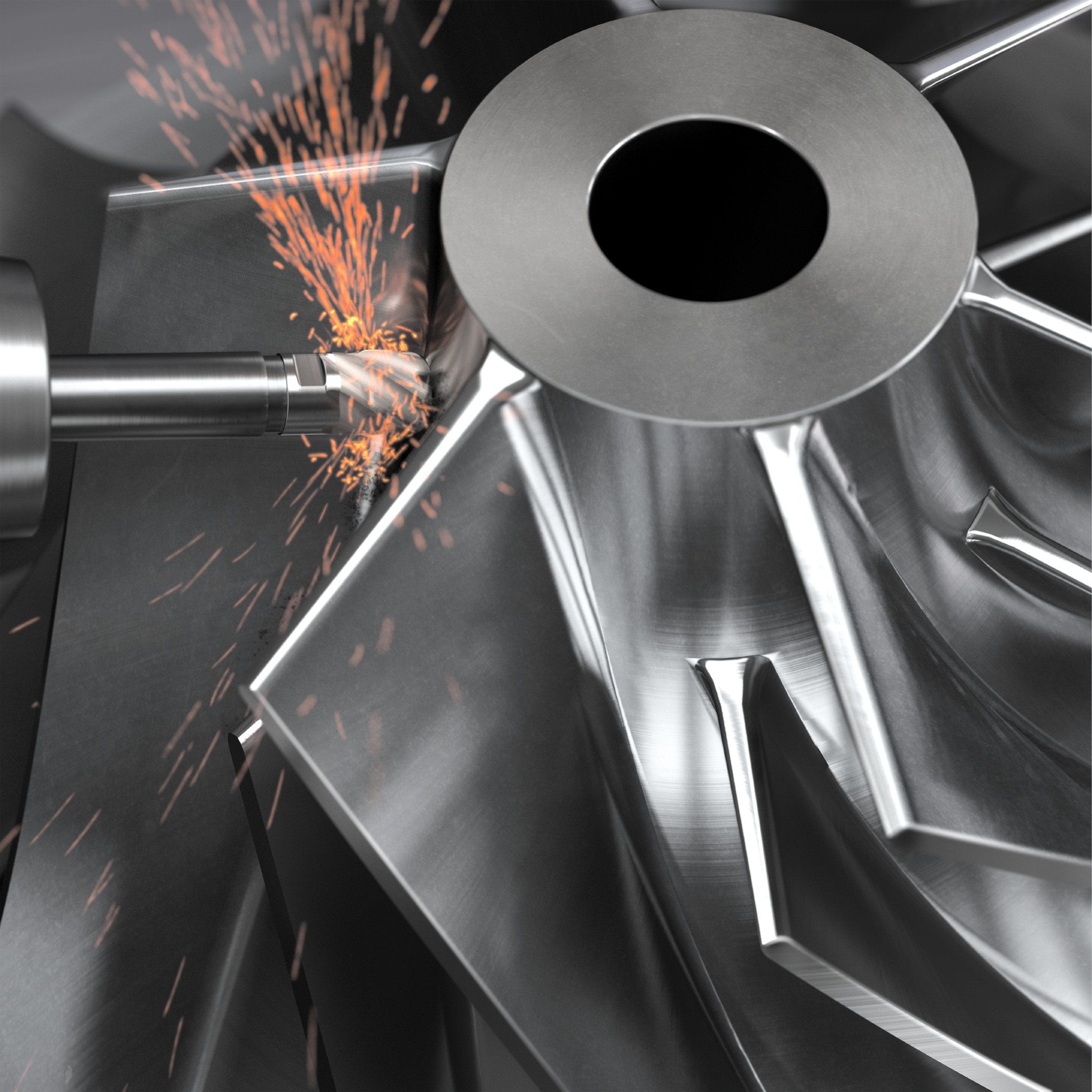Aerospace Manufacturers Use Tools, Geometries, and Materials to Machine HRSAs

Sébastien Jaeger, Industry Solution Manager – Aerospace, Sandvik Coromant, explains why a better machining strategy, including the machine, tools, geometries, and tool materials, is required as tighter emissions regulations require aero engines to burn hotter and be made of heat-resistant super alloys (HRSAs), which are difficult to machine efficiently and cost-effectively.
HRSAs are dominating materials in jet engine compressor and turbine components. The foremost grades used for these applications are the nickel-based types such as Inconel, Waspaloy, and Udimet. Nevertheless, the properties of HRSAs vary greatly depending on the composition and production process. Heat treatment in particular has great significance—a precipitation-hardened, i.e., ‘aged,’ component can show double the hardness of a softly annealed or untreated workpiece. The tighter emission regulations require higher service temperatures from new engine types, and new materials for the hottest components. In response to these challenges, the total amount of HRSA in a jet engine is increasing compared with other materials. However, the benefits of HRSAs are offset by manufacturing challenges. First, high temperature strength leads to high cutting forces. Second, low thermal conductivity and excellent hardenability result in high cutting temperatures. And, third, work-hardening tendencies give rise to notch wear.
The components
Turbine discs, casings, blisks, and shafts make demanding workpieces; many of them are thin-walled and all include complex shapes. These safety-critical engine components must comply with stringent quality and dimensional accuracy criteria. The preconditions for success include a powerful machine, rigid tools, high-performance inserts, and optimal programming. The prevalent machining methods vary. Usually, disc, ring, and shaft components are turned, while casings and blisks are often milled.
The machining of HRSAs is generally divided into three stages. During first stage machining (FSM), a cast or forged blank receives its basic shape. The workpiece is usually in a soft condition (with a typical Rockwell hardness of around 25 HRC), but it often has a rough, uneven skin, or scale. The main priority is good productivity and efficient stock removal. Between the first and the intermediate stage machining (ISM), the workpiece is heat-treated to a much harder aged condition—typically around 36–46 HRC. The component now receives its final shape, except that the stock allowance is left for finishing. The focus is again on productivity, but process security is also important.
Quality, carbide inserts
The final shape and surface finish is created during last stage machining (LSM). The emphasis here is on surface quality, accurate dimensional tolerances, and avoiding deformations and excessive residual stress. In critical rotating components, fatigue properties are the most important criteria, leaving no room for surface defects that could initiate crack formation. The reliability of critical parts is guaranteed by applying a proven, certified machining process. General requirements for indexable inserts include good edge toughness and high adhesion between the substrate and the coating. While negative basic shapes are used for high strength and economy, the geometry should be positive.
Coolant should always be applied when machining HRSAs, except for milling with ceramic inserts. Ceramic inserts require a copious volume, while the accuracy of the stream is essential for cemented carbide. When using carbide inserts, a high coolant pressure yields further benefits, including longer tool life and efficient chip control. Machining parameters vary depending on the conditions and the material. During FSM, good productivity is mainly achieved through the use of high feed rates and large depths of cut. In ISM, ceramic inserts are often used for higher speeds. The final stages focus on quality, and the depth of cut is small. Since a high cutting speed can impair the surface quality, carbide inserts are applied for finishing.
A sharp edge
Plastic deformation and notching are the typical wear mechanisms in carbide inserts, while top slice wear is common in ceramics. Vulnerability to plastic deformation decreases by increasing the wear resistance and hot hardness. A positive geometry and a sharp edge are also important in reducing heat generation and cutting forces. Remedies to notch wear on the main cutting edge include a small entering angle, for instance by using a square or a round insert, or a cutting depth that is lower than the nose radius.
Physical vapor deposition (PVD)-coated inserts are more resistant to notching on the main edge, while a chemical vapor deposition (CVD)-coated insert has better resistance against notch wear on the trailing edge. In finishing, notch wear on the trailing edge can impair the surface finish.
Efficient machining of engine components from HRSAs requires a well-balanced overall solution, particularly taking into account factors such as workpiece condition, tool material and the related cutting data recommendations, use of coolant, and optimized machining strategies. With these factors in place, manufacturers can do their part to help the aerospace industry’s goal to reach net-zero greenhouse gas emissions by 2050.
Image Source: Sandvik Coromant



 Facebook
Facebook.png) Twitter
Twitter Linkedin
Linkedin Subscribe
Subscribe